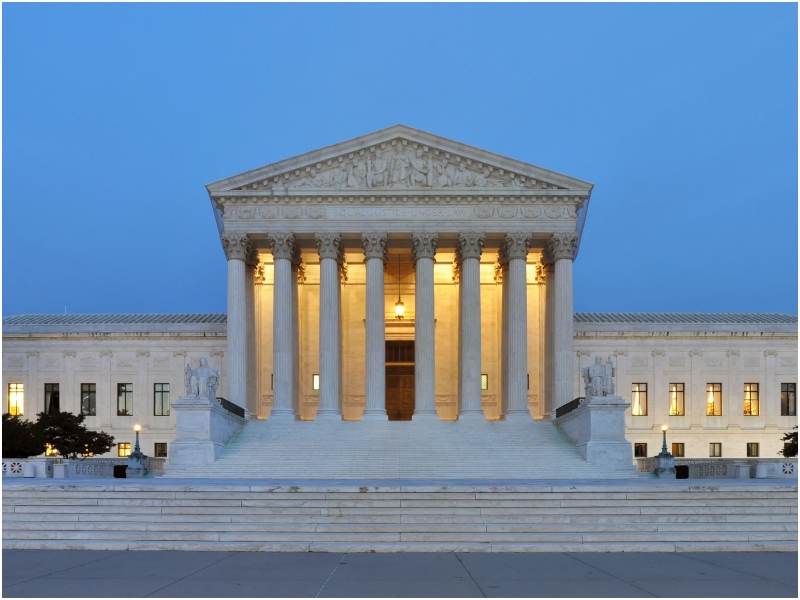The U.S. Supreme Court has made landmark rulings that continue to define fundamental American rights and legal principles, especially in educational settings.
By setting legal precedents, these cases have clarified students’ rights, defined the limits of government and school authority, and protected individual freedoms under the Constitution.
Defining Free Speech in Schools
In Bethel School District v. Fraser (1987), the Court ruled that students do not have the right to make obscene speeches at school, establishing a precedent that protects schools’ ability to limit certain expressions. Matthew Fraser, a high school student, was suspended after delivering a speech filled with sexual innuendos to nominate a peer for student office. Fraser argued this suspension violated his First Amendment rights. However, the Court upheld his suspension, noting that the school had the authority to restrict speech deemed disruptive to educational values.
Tinker v. Des Moines (1969), however, set a contrasting precedent for free speech, reinforcing students’ rights when they wore black armbands to protest the Vietnam War. Unlike in Fraser, the Court ruled that schools could not censor symbolic speech that doesn’t disrupt learning, establishing the famous doctrine that students don’t “shed their constitutional rights to freedom of speech or expression at the schoolhouse gate.”
Expanding Rights in Criminal Cases
The rights of criminal defendants also saw a significant expansion in the 1960s through cases such as Gideon v. Wainwright (1963) and Miranda v. Arizona (1966). Clarence Gideon, accused of felony theft, represented himself at trial after being denied a state-provided lawyer due to his inability to pay. The Supreme Court ruled in his favor, deciding that the Sixth Amendment requires states to provide free legal representation to indigent defendants, fundamentally transforming the criminal justice system. Similarly, Miranda v. Arizona set the requirement for law enforcement to inform suspects of their rights before questioning, establishing what we now call “Miranda Rights.”
Privacy and Due Process in Education
The Fourth Amendment’s protection against unreasonable searches and seizures was examined in New Jersey v. T.L.O. (1985). In this case, a high school student’s purse was searched without a warrant after she was suspected of smoking. The Court ruled that while students do have a right to privacy, it is somewhat reduced in school, allowing for reasonable searches to maintain school safety. Likewise, Goss v. Lopez (1975) ruled that students suspended for misconduct are entitled to due process, ensuring they are given the chance to hear and challenge the accusations against them.
Civil Rights and Racial Equality
One of the most famous rulings, Brown v. Board of Education (1954), overturned Plessy v. Ferguson (1896) and ended the practice of racial segregation in public schools. The NAACP argued that segregation violated the Equal Protection Clause of the 14th Amendment. The Court agreed, stating that “separate educational facilities are inherently unequal,” marking a turning point in the fight for civil rights. This principle was later reinforced in Cooper v. Aaron (1958), where the Court asserted that states could not nullify federal desegregation rulings, underscoring the federal judiciary’s authority.
Church and State Separation
The boundaries between religion and public schooling were addressed in Engel v. Vitale (1962) and Santa Fe Independent School District v. Doe (2000). Engel struck down a daily prayer in New York schools, ruling that state-sponsored prayer violates the First Amendment’s Establishment Clause, thereby strengthening the wall between church and state. Similarly, in Santa Fe v. Doe, the Court ruled against school-initiated prayer over loudspeakers at football games, further clarifying that even voluntary, student-led prayer in public settings could constitute a violation.
Equality and Diversity in Higher Education
More recently, Grutter v. Bollinger (2003) upheld the right of colleges to consider diversity in admissions, confirming that institutions can weigh diversity as a compelling interest to enrich the educational experience. This ruling reflected the evolving recognition of diversity as beneficial for academic and social environments, balancing individual rights with broader societal goals.
These and other Supreme Court rulings have continually shaped American law, impacting not only the lives of students but also society at large by upholding the Constitution’s promises of freedom, equality, and justice. They remain essential for anyone studying law, government, or civil rights in America, as they provide a roadmap of evolving liberties and state power.

